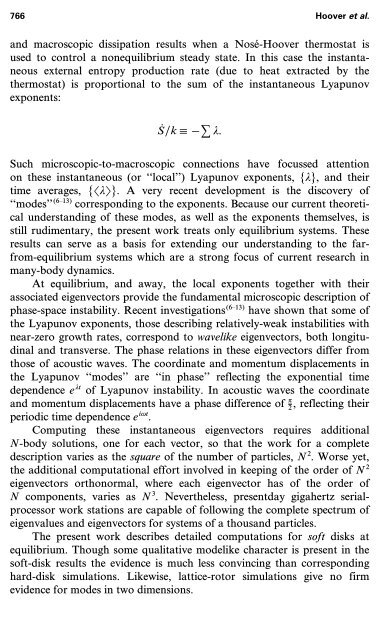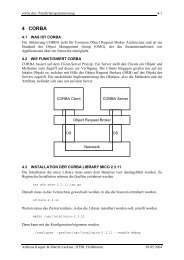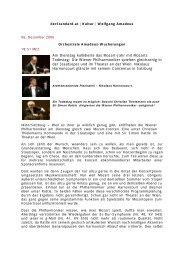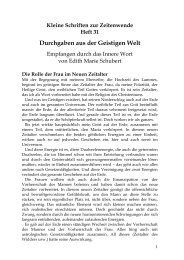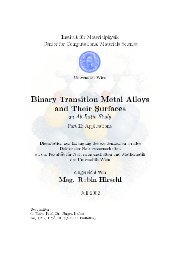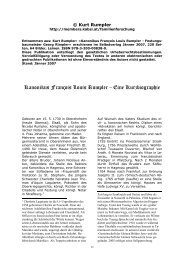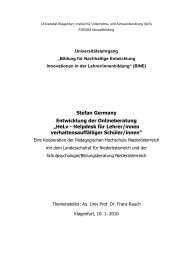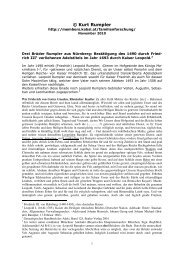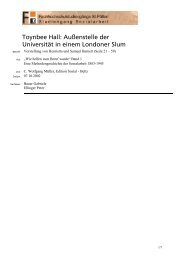Lyapunov Modes of Two-Dimensional Many-Body Systems; Soft ...
Lyapunov Modes of Two-Dimensional Many-Body Systems; Soft ...
Lyapunov Modes of Two-Dimensional Many-Body Systems; Soft ...
Create successful ePaper yourself
Turn your PDF publications into a flip-book with our unique Google optimized e-Paper software.
766 Hoover et al.<br />
and macroscopic dissipation results when a Nosé-Hoover thermostat is<br />
used to control a nonequilibrium steady state. In this case the instantaneous<br />
external entropy production rate (due to heat extracted by the<br />
thermostat) is proportional to the sum <strong>of</strong> the instantaneous <strong>Lyapunov</strong><br />
exponents:<br />
S ˙ /k — − C l.<br />
Such microscopic-to-macroscopic connections have focussed attention<br />
on these instantaneous (or ‘‘local’’) <strong>Lyapunov</strong> exponents, {l}, and their<br />
time averages, {OlP}. A very recent development is the discovery <strong>of</strong><br />
‘‘modes’’ (6–13) corresponding to the exponents. Because our current theoretical<br />
understanding <strong>of</strong> these modes, as well as the exponents themselves, is<br />
still rudimentary, the present work treats only equilibrium systems. These<br />
results can serve as a basis for extending our understanding to the farfrom-equilibrium<br />
systems which are a strong focus <strong>of</strong> current research in<br />
many-body dynamics.<br />
At equilibrium, and away, the local exponents together with their<br />
associated eigenvectors provide the fundamental microscopic description <strong>of</strong><br />
phase-space instability. Recent investigations (6–13) have shown that some <strong>of</strong><br />
the <strong>Lyapunov</strong> exponents, those describing relatively-weak instabilities with<br />
near-zero growth rates, correspond to wavelike eigenvectors, both longitudinal<br />
and transverse. The phase relations in these eigenvectors differ from<br />
those <strong>of</strong> acoustic waves. The coordinate and momentum displacements in<br />
the <strong>Lyapunov</strong> ‘‘modes’’ are ‘‘in phase’’ reflecting the exponential time<br />
dependence elt <strong>of</strong> <strong>Lyapunov</strong> instability. In acoustic waves the coordinate<br />
, reflecting their<br />
and momentum displacements have a phase difference <strong>of</strong> p<br />
2<br />
periodic time dependence eiwt .<br />
Computing these instantaneous eigenvectors requires additional<br />
N-body solutions, one for each vector, so that the work for a complete<br />
description varies as the square <strong>of</strong> the number <strong>of</strong> particles, N2 . Worse yet,<br />
the additional computational effort involved in keeping <strong>of</strong> the order <strong>of</strong> N2 eigenvectors orthonormal, where each eigenvector has <strong>of</strong> the order <strong>of</strong><br />
N components, varies as N3 . Nevertheless, presentday gigahertz serialprocessor<br />
work stations are capable <strong>of</strong> following the complete spectrum <strong>of</strong><br />
eigenvalues and eigenvectors for systems <strong>of</strong> a thousand particles.<br />
The present work describes detailed computations for s<strong>of</strong>t disks at<br />
equilibrium. Though some qualitative modelike character is present in the<br />
s<strong>of</strong>t-disk results the evidence is much less convincing than corresponding<br />
hard-disk simulations. Likewise, lattice-rotor simulations give no firm<br />
evidence for modes in two dimensions.


